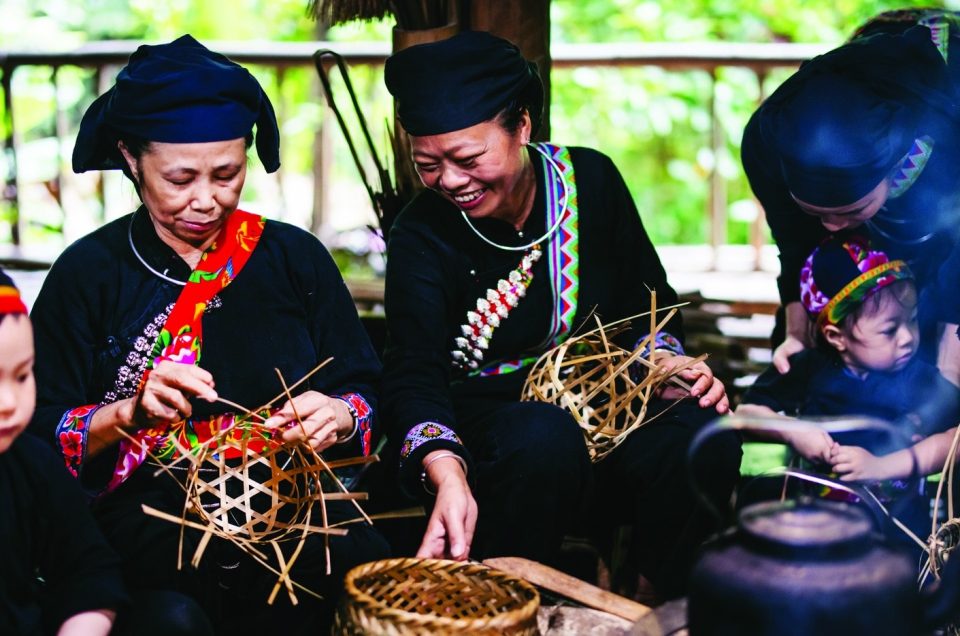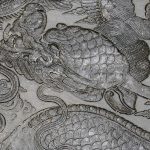Sleeping beauty
“What’s interesting about Thai Nguyen province?”
We wondered this before joining the Heritage Photo Tour – Thai Nguyen 2024 because our only associations with Thai Nguyen province were Tan Cuong tea, the Safety Zone (ATK) during the resistance war, and the iron and steel industry. After three days of exciting experiences, we likened this midland region to a beautiful girl, slowly awakening after a long sleep in the forest.
After the summer rains, the greenery along the winding paths in Thai Hai village was lush. The village’s Tay people welcomed us with bright eyes and gentle smiles as if we were long-lost relatives on our way home. The first stop on our Photo Tour left deep cultural impressions thanks to its stilt houses and unique customs of communal living. With nearly 200 inhabitants, this model village operates like a large family, with residents sharing meals, production, and expenses. Children are cared for as they study, the elderly are provided medical care, and working-age men and women are assigned production tasks or serve visitors to the village.

The photographers spent a valuable day creating vivid images of the locals’ way of life: from carrying water, cooking rice, and weaving agricultural tools, to performing customs like offering water to guests, singing traditional songs, and playing a traditional game of throwing a sacred ball through a ring.
As usual, we worried about taking photos out of doors since rain was forecasted. Fortunately, the second day dawned with clear skies over Nui Coc Lake. With vast waters and mountains faintly visible in the distance, this legendary blue lake provided many poetic shots. Upon reviewing the photographers’ creations from the early morning, we recalled a song we had heard earlier during the journey:
Floating (oh) floating
Swaying (oh) swaying
The boat meets the wind-drunk guests
The boat drifts, the boat drifts
The oar stirs the deep blue water.
– Excerpt from Huyền thoại hồi Núi Cốc (Legend of Núi Cốc Lake) by musician Pho Duc Phuong
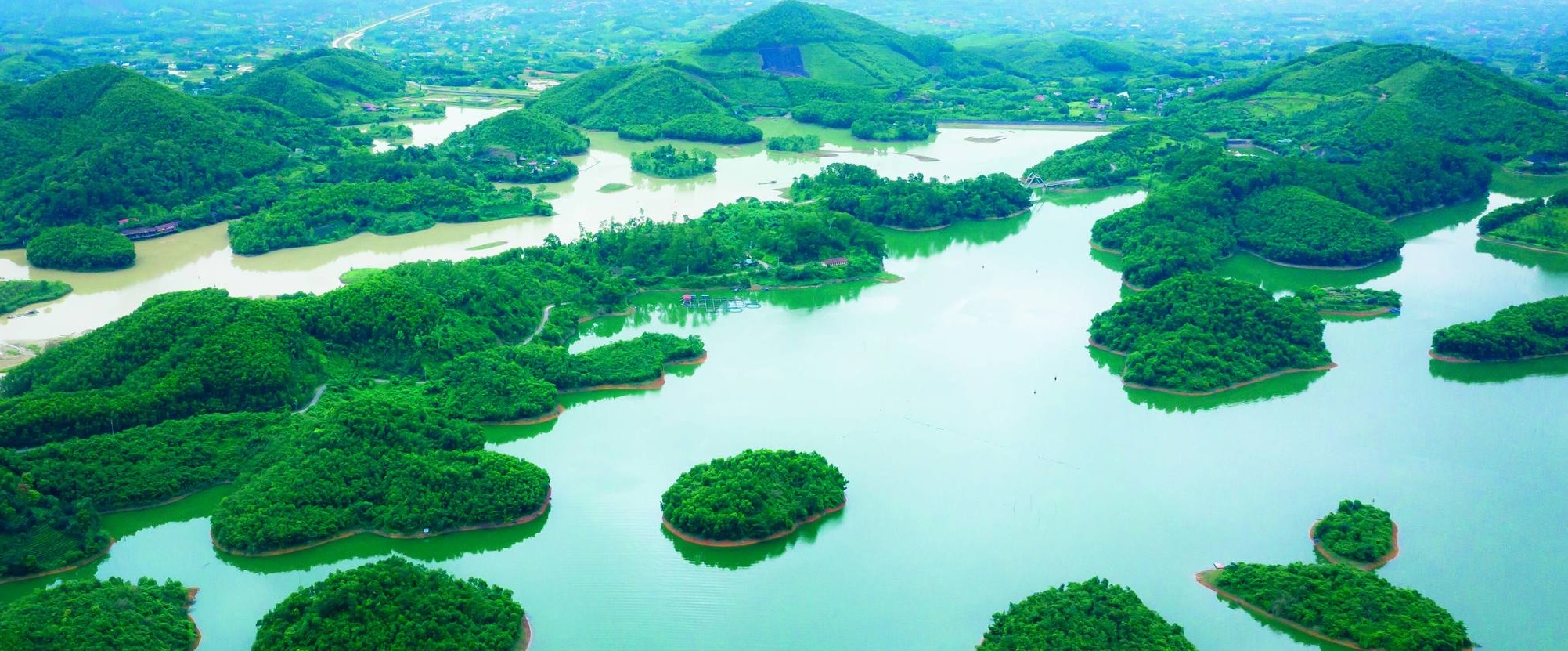
The scenery continued to stir the photographers’ souls as they visited the gently rolling, lush green tea hills or witnessed torrents of water rushing down Cua Tu Stream after heavy rains. The Photo Tour inspired participants’ full creativity by interspersing experiences with stories about local people.
One such story follows the female “captain” of the Hao Dat Tea Cooperative, who is passionate about developing clean tea while protecting the environment and making products that have received national 5-star OCOP certification. Another story revolves around the meticulous manual processing steps needed to produce the renowned Tan Cuong tea products, such as Bup Non tea, Non Tom Tan Cuong tea, and the famous Dinh tea. The secrets of tea-processing were shared over a cozy meal featuring delicious dishes made from tea leaves. These dishes had intriguing names like “golden-robed green tea”, “jade hidden in the clouds”, and “braised fish with tea buds”. Photo Tour participants also learned about the efforts of young tourism enthusiasts in Dai Tu district, who build homestays and promote them to domestic and international visitors. This district is home to Cua Tu Stream, which is surrounded by trekking routes and wild nature.
With many more stories to uncover, we all promised to return to Thai Nguyen to admire this “beautiful girl sleeping in the forest”. See you again, during sunny days, Thai Nguyen!
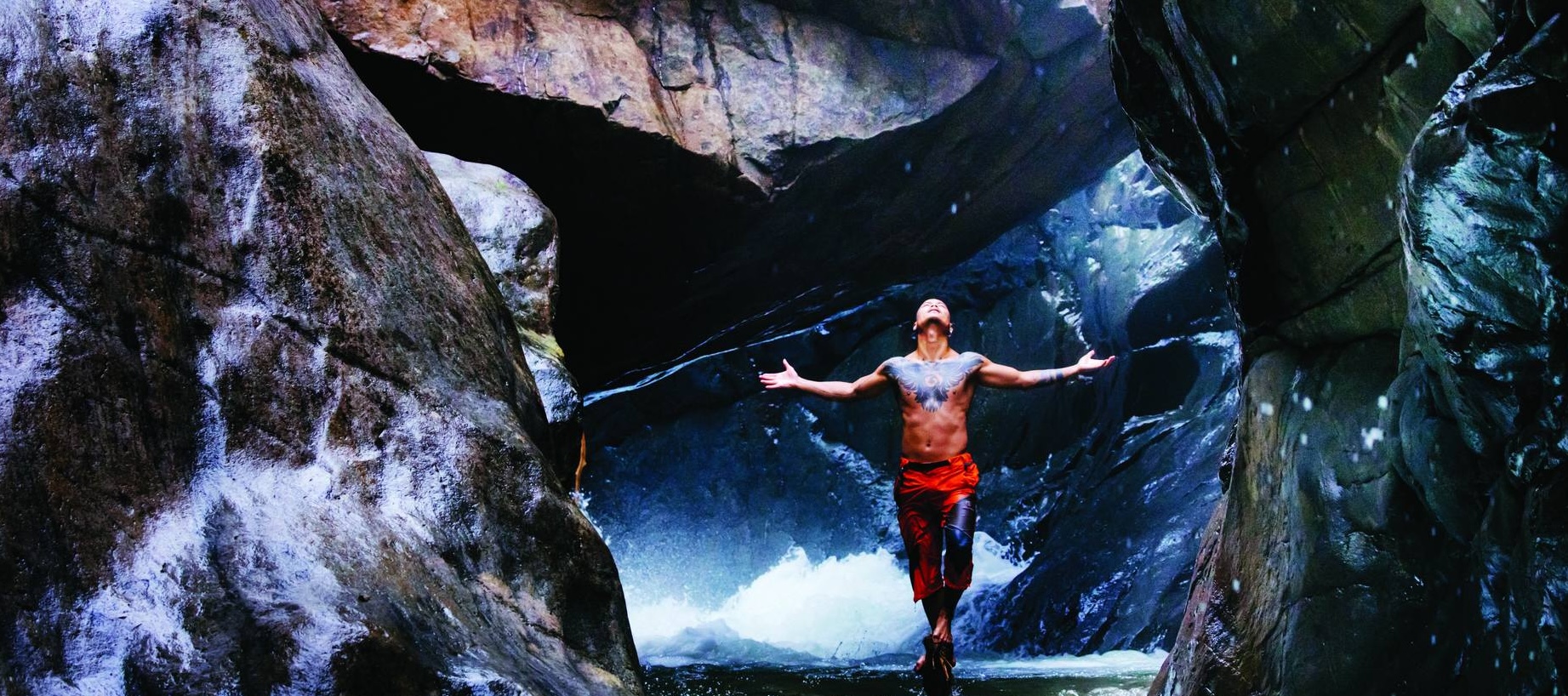
Longing for a misty village
In the past decade, growing numbers of global travel websites are praising Vietnam’s mountainous landscapes and traditional villages. Vietnamese people seem the most surprised by this attention, wondering: Can our homeland be so poetic and “classy”? Less than 80km from Hanoi, the Thai Hai Reserve Area of Ecological Houses-on-Stilts Village (Thinh Duc Commune, Thai Nguyen City) presents a typical picture of life in an ethnic Tay community amidst forested mountains. Visitors often wonder how the locals became so talented.

It is not the province’s grand scenery, vast tea hills, or majestic rivers and waterfalls that have become the highlight of a visit to Thai Nguyen but this small village, which was honored by the World Tourism Organization (UNWTO) as “one of the 32 best tourism villages in the world in 2022”. To achieve this recognition, villages must meet nine complex criteria. Thai Hai heralds the beginning of an effort to develop tourism locally and nationwide, as last year, the flooded area of Tan Hoa in Quang Binh was also honored as “the best tourist village in the world”.

Located in a 25-hectare valley, surrounded by hills and an ecological lake, Thai Hai started out as a small settlement with only a dozen houses. In the early 2000s, an ethnic Tay woman named Ms. Nguyen Thi Thanh Hai saw that people were dismantling some 80-year-old stilt houses to build new brick houses in the Dinh Hoa Safety Zone, a former resistance base against the French colonial regime. Ms. Thanh Hai bought 30 stilt houses and reassembled them in Thai Hai. More people came to settle in Thai Hai from various regions, since Thai Nguyen used to be remote and isolated.
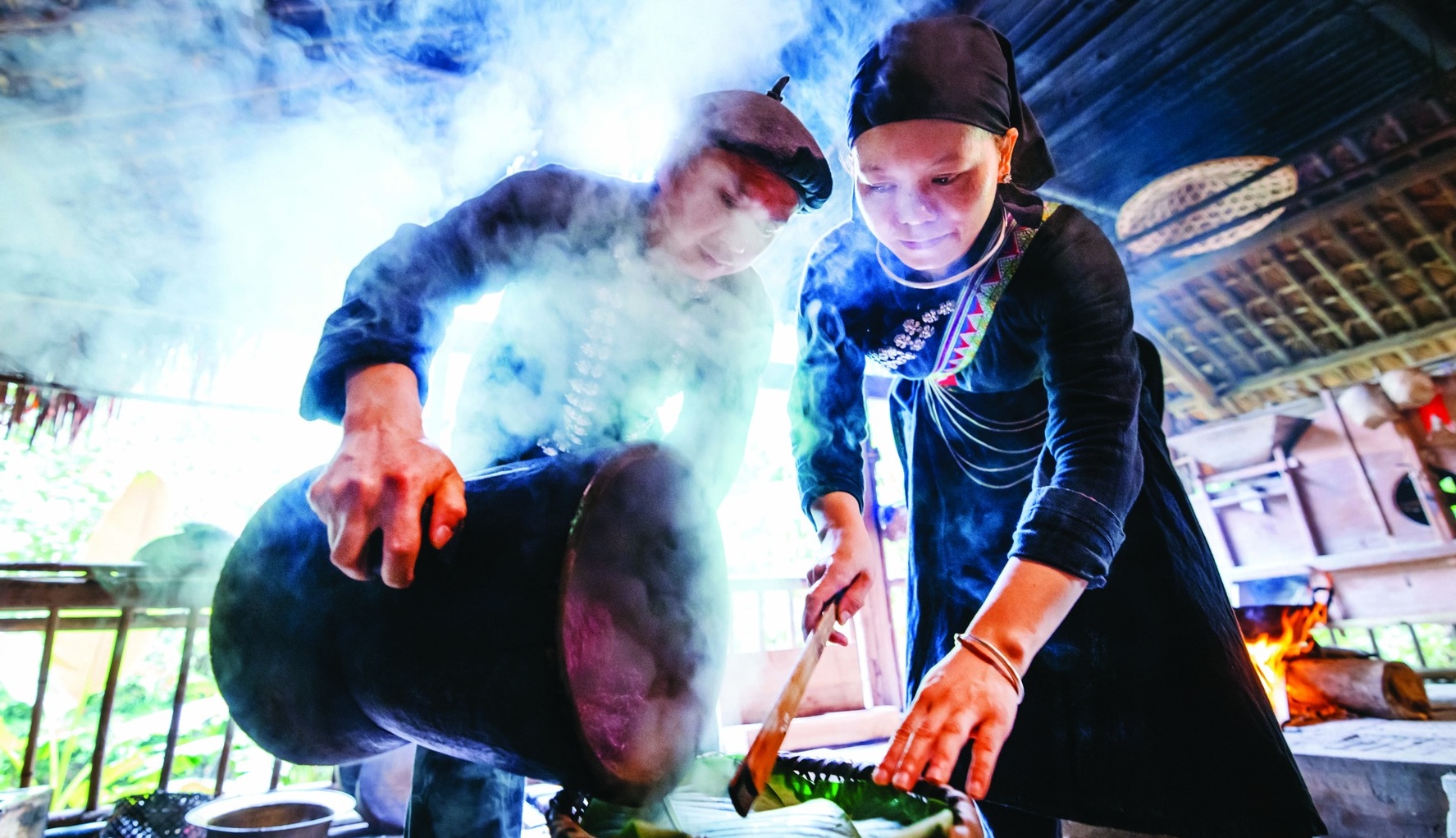
More than 80 years ago, the poet Nguyen Binh wandered through Thai Nguyen and wrote these exquisite lines:
Who dyed the grassy hills so green?
Who dyed your dress so all I see is indigo?
Who dyed the sky so blue?
Who dyed our love, who made it fade? (Vì ai)
and
The high pass makes the stream hesitate.
Sunlight gently shines, the afternoon lingers…
Rose myrtle hills snuggle with the tea fields.
White smoke from the mountains, who’s wearing that blue shirt? (Đường rừng chiều)
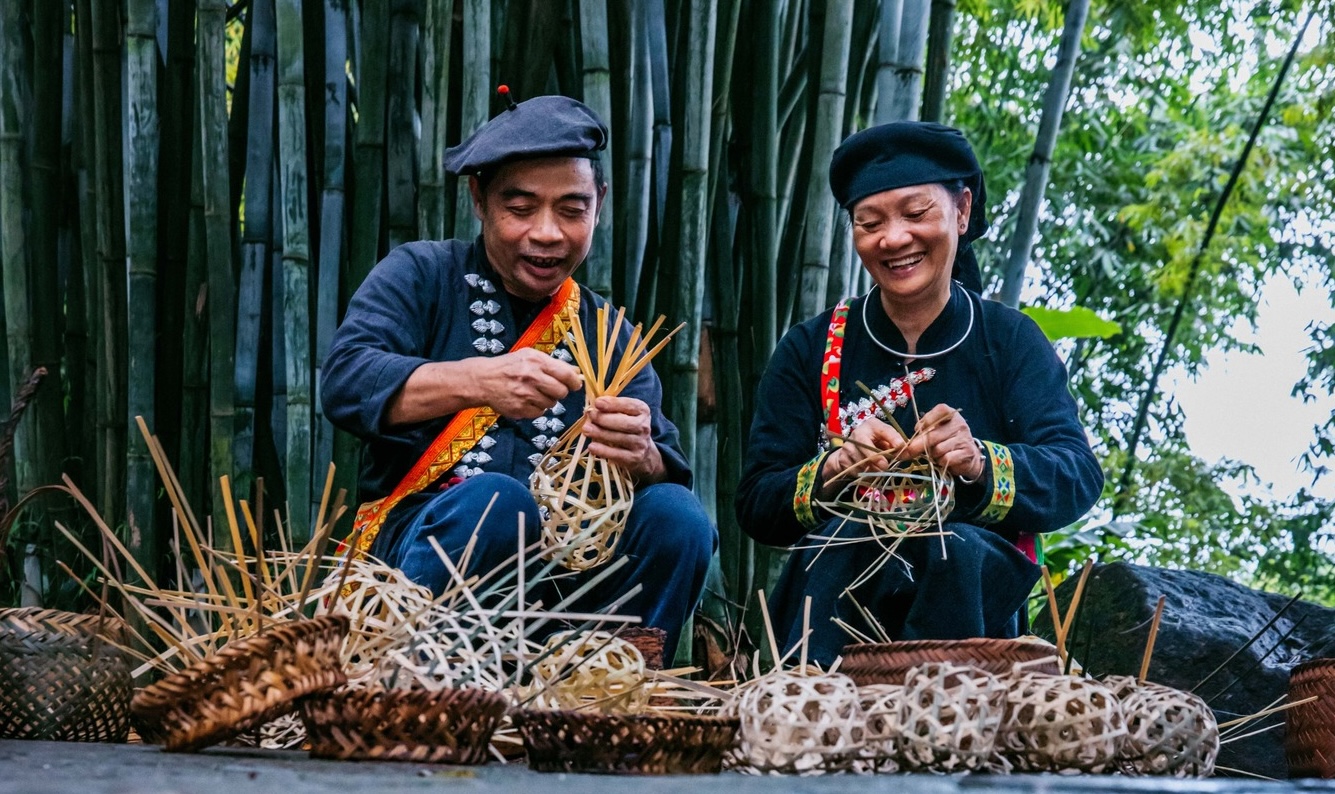
Today, the grassy hills remain green, the indigo dresses still stand out in the tea fields, and the girls’ eyes remain dreamy under their graceful scarves. But Thai Hai does not evoke the loneliness of these old poems. Nearly 200 “community members”, as they call themselves, “share the same pot of rice, share the same pocket of money,” as they work together in this ecological space, which reminds us of an ideal cooperative.


